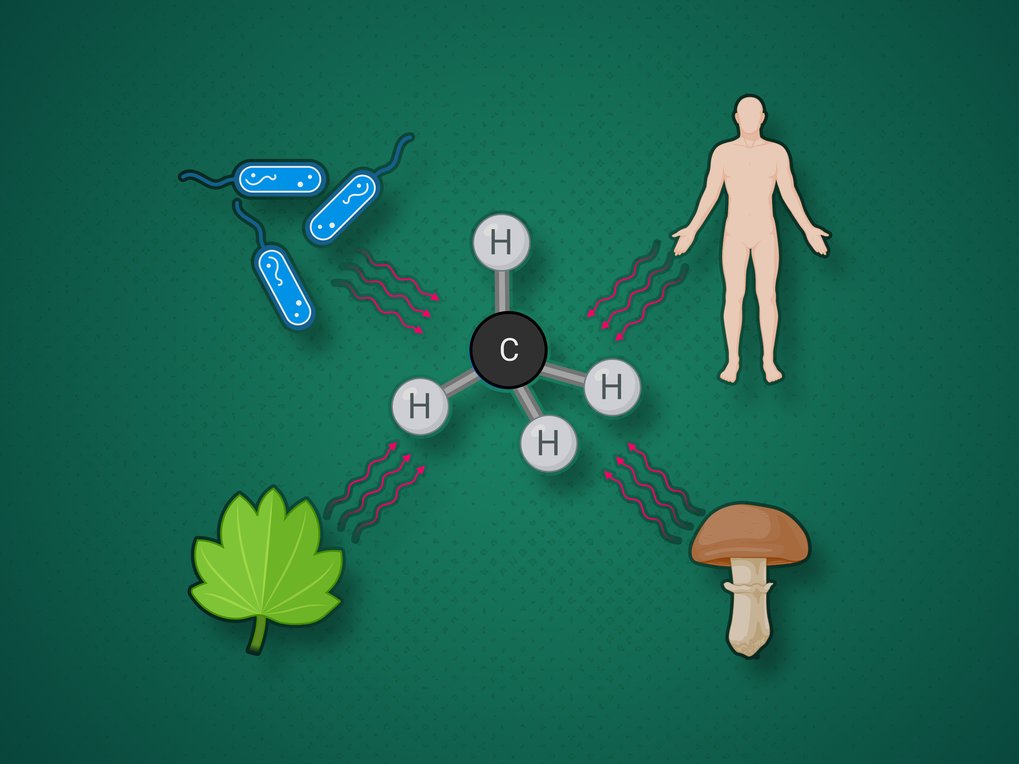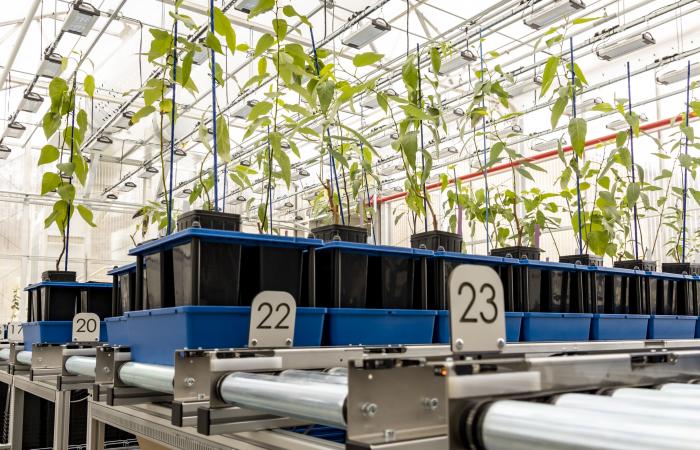温室効果ガスの生成は、活性酸素によって引き起こされる The formation of the greenhouse gas is driven by reactive oxygen species
2022-03-09 マックス・プランク研究所
It is well known that methane, a greenhouse gas, is produced by special microorganisms, for example in the intestines of cows, or in rice fields. For some years, scientists had also observed the production of methane in plants and fungi, without finding an explanation. Now researchers from Heidelberg and the Max Planck Institute for Terrestrial Microbiology in Marburg have shed light on the underlying mechanism. Their findings suggest that all organisms release methane.

All organisms produce methane in a chemical process involving free radicals.
© Max Planck Institute for Terrestrial Microbiology/Ernst
Methane is a potent greenhouse gas, so the study of its natural and anthropogenic biogeochemical sources and sinks is of enormous interest. For many years, scientists considered methane to be produced only by single-celled microbes called Archaea, upon decomposition of organic matter in the absence of oxygen (anaerobic).
Now, a collaboration of earth and life scientists led by Frank Keppler and Ilka Bischofs has shown that an enzyme is potentially not necessary for methane formation, as the process can also take place via a purely chemical mechanism. “Methane formation triggered by reactive oxygen species most likely occurs in all organisms,” explains Leonard Ernst, an interdisciplinarily trained junior researcher who conducted the study. The scientists verified the reactive oxygen species-driven formation of methane in more than 30 model organisms, ranging from bacteria and archaea to yeasts, plant cells and human cell lines.
It was a sensation when Max Planck researchers discovered the release of methane from plants in the presence of oxygen (aerobic) 16 years ago. However, initially the results were doubted, since methane formation could not be explained with the then existing knowledge about plants. When researchers observed that also fungi, algae and cyanobacteria (formerly blue-green algae) formed methane under aerobic conditions, enzymatic activities were assumed to be responsible. However, the researchers never found a corresponding enzyme in any of these organisms. “This study is therefore a milestone in our understanding of aerobic methane formation in the environment,” said Frank Keppler, a geoscientist at Heidelberg University. “This universal mechanism also explains the observations of our previous study on the release of methane from plants,” adds Keppler.
High cell activity leads to more methane
![ROS-driven methane formation in cells. Reactive oxygen species (ROS) such as hydrogen peroxide (H2O2) are generated during cellular metabolism and their production is enhancedby oxidative stress. Cells need iron for survival and reduce iron(III) [Fe3+] to iron(II) [Fe2+]. The interaction of ROS and Fe2+ leads to the Fenton reaction and thus to the formation of highly reactive tetravalent iron (FeIV) compounds and hydroxyl (-OH) radicals. These, in turn, attack methylated sulfur or nitrogen compounds (e.g. methionine), which are produced by cells or taken up from the environment. In doing so, a methyl radical (•CH3) is formed by oxidative demethylation, which then, by abstraction of a hydrogen atom (e.g., from other hydrocarbons), reacts to methane (CH4).](https://www.mpg.de/18404977/original-1646839800.jpg)
ROS-driven methane formation in cells. Reactive oxygen species (ROS) such as hydrogen peroxide (H2O2) are generated during cellular metabolism and their production is enhanced by oxidative stress.… [more]
© Max Planck Institute for Terrestrial Microbiology/Ernst
As the researchers have now been able to show using the bacterium Bacillus subtilis, there is a close connection between metabolic activity and extent of methane formation. Metabolic activity, especially under the influence of oxygen, leads to the formation of reactive oxygen species in cells, which include hydrogen peroxide and hydroxyl radicals. In interaction with the essential element iron, the Fenton reaction takes place – a reaction between reduced iron and hydrogen peroxide that leads to the formation of highly reactive tetravalent iron compounds and hydroxyl radicals.
The latter molecules drive the cleavage of a methyl radical from methylated sulfur and nitrogen compounds, e.g., the amino acid methionine. In a subsequent reaction of the methyl radical with a hydrogen atom, methane is finally formed. All reactions can take place under physiological conditions in a test tube and are significantly enhanced by biomolecules such as ATP and NADH, which are generated by cellular metabolism.
Oxidative stress boosts methane formation
Additional oxidative stress, triggered by physical and chemical factors, e.g. higher ambient temperatures or the addition of reactive oxygen species-forming substances, also led to an increase in methane formation in the examined organisms. In contrast, the addition of antioxidants and the scavenging of free radicals reduced the formation of methane – an interaction that probably controls the formation of methane in organisms.
The study therefore also helps to explain why methane production by a certain organism can vary by several orders of magnitude and why stress factors particularly affect the amount of production. Shifts in environmental and temperature conditions caused by climate change could potentially influence the stress levels of many organisms and thus their atmospheric methane emissions. Conversely, variations in the methane content of the breath could indicate age- or stress-related changes in cellular metabolism.


